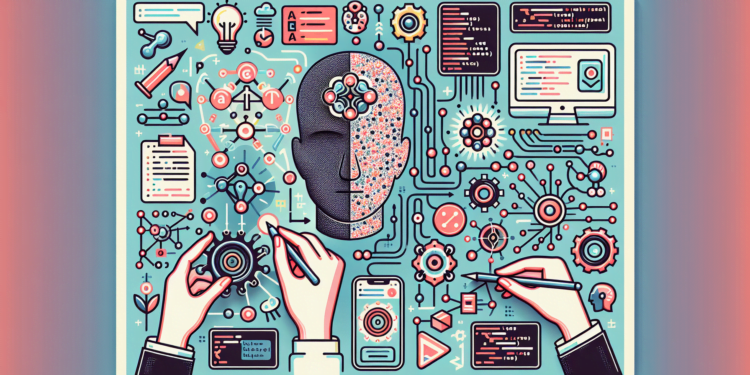Artificial Intelligence (AI) is a fascinating field within computer science devoted to creating systems capable of carrying out tasks that, until now, required human intelligence. Among the tools driving innovation in this field is TensorFlow, an open-source software library for numerical computation that streamlines the construction of AI models, developed by the Google Brain team.
Within the landscape of artificial intelligence, TensorFlow has emerged as one of the most prominent frameworks, assisting both researchers and developers in implementing deep learning algorithms. This library provides a broad range of tools for the design of complex neural networks, and its application extends from advanced research projects to real-world enterprise solutions.
Introduction to TensorFlow: Technical Fundamentals
TensorFlow is based on the construction of a computational graph, where each node represents a mathematical operation, and each edge symbolizes the multidimensional data flow, known as tensors. These graphs are executed within sessions that allow for the distributed use of resources, such as CPUs and GPUs, thus optimizing computational efficiency.
This library enables the execution of AI applications across various platforms, from servers to mobile devices, which has facilitated the expansion of AI into multiple sectors. TensorFlow’s functionalities include TensorFlow Lite for mobile and embedded devices, TensorFlow.js for machine learning in JavaScript, as well as specialized tools for tasks such as computer vision (TensorFlow Object Detection API) or natural language processing (TensorFlow Text).
Recent Advances and Practical Applications
TensorFlow 2.x has marked an important milestone in the evolution of the library. With significant improvements in ease of use and the integration of the high-level Keras API, the process of model creation has been simplified without sacrificing flexibility and granular-level control.
The application of TensorFlow in the real world is extensive. In the healthcare sector, AI algorithms are used for the diagnosis of diseases through the analysis of medical images. In finance, predictive models built with TensorFlow assist in fraud detection and risk management. Additionally, in the manufacturing industry, TensorFlow is employed for predictive maintenance systems and process optimization.
TensorFlow and Scientific Development
As far as scientific research is concerned, TensorFlow has not only contributed to the development of new algorithms and techniques in machine learning but has also enabled significant advancements in diverse fields such as particle physics, genomics, and climatology. Its open-source nature allows researchers from all over the world to collaborate and share their findings, thus accelerating the pace of scientific progress.
Economic and Social Impact
The economic impact of TensorFlow is reflected in its ability to democratize access to AI technology. Startups and large corporations alike can use TensorFlow to create innovative products and personalized services, generating significant added value in the digital economy.
On the other hand, the social influence of TensorFlow is also noteworthy. AI has the potential to improve people’s quality of life through applications ranging from personal assistants to autonomous transportation systems. However, it also poses ethical and privacy challenges that must be responsibly addressed.
Future Projections and Potential Innovations
Looking ahead, TensorFlow will continue to be a cornerstone in the evolution of AI. The integration of AI into edge devices and the development of federated learning models open new possibilities for more private and efficient data processing. Furthermore, the library is expected to expand with more tools for explainable machine learning, which will increase transparency and foster trust in AI-based decisions.
In conclusion, TensorFlow is much more than a tool for AI developers; it is a catalyst for innovation and progress across multiple disciplines. As this technology evolves, specialists must stay informed and prepared to make the most of its advanced capabilities and adapt to its implications in both the technological realm and the broader social and economic fabric.






















